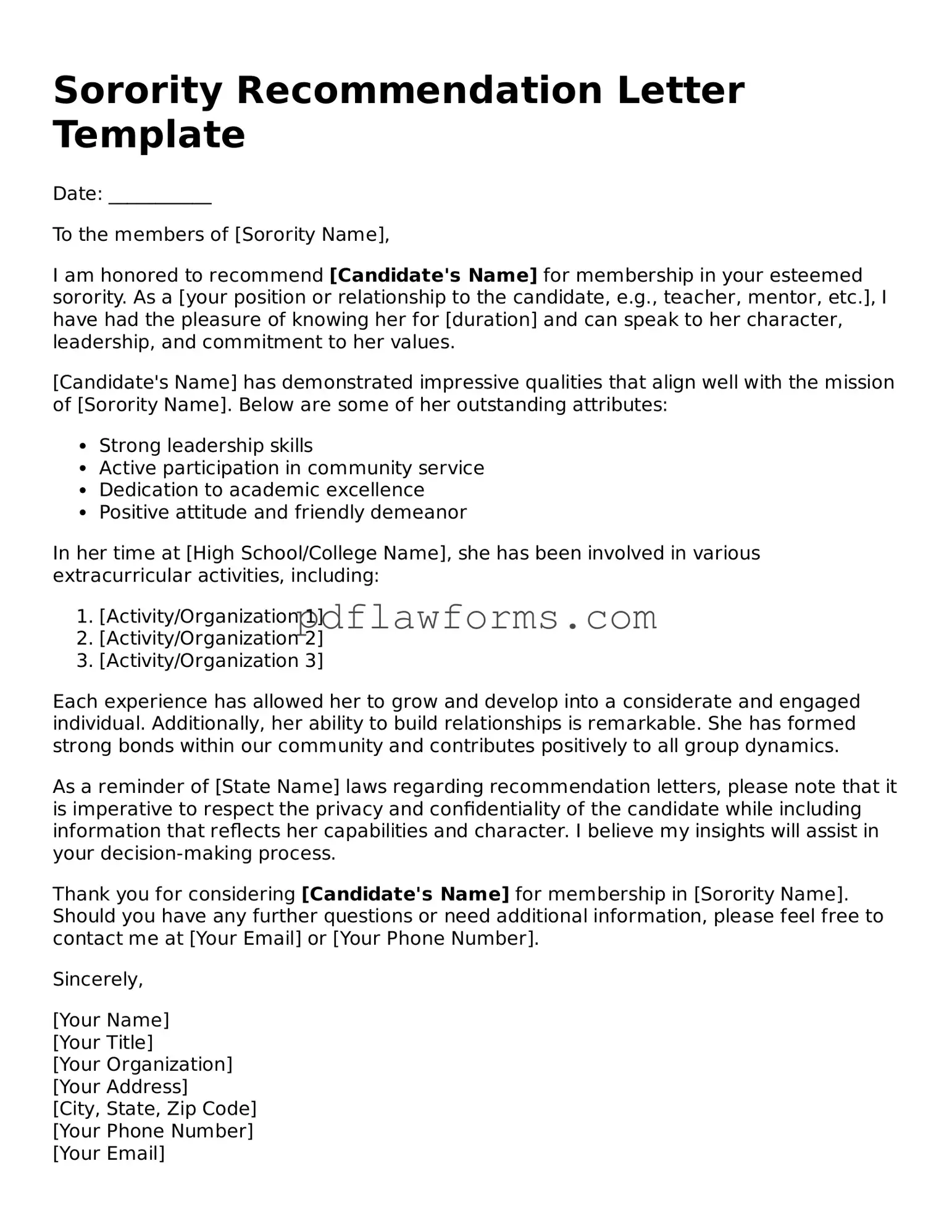Official Sorority Recommendation Letter Form
A Sorority Recommendation Letter form is a document used to support a potential member’s application to a sorority. This form typically includes information about the applicant, along with insights from someone who knows her well. Completing this form can enhance a candidate's chances of receiving an invitation to join a sorority.
Ready to take the next step? Fill out the form by clicking the button below!
Make My Document Online
